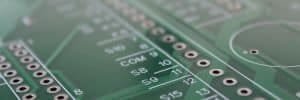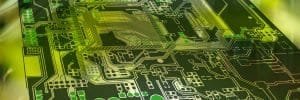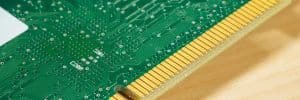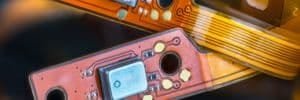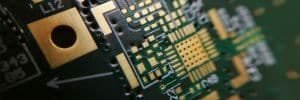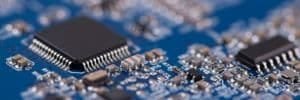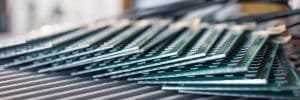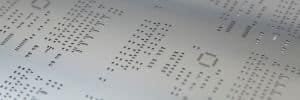What problems should be paid attention to in the PCB circuit board stack-up design? Below is the advice given by our professional engineers with extensive PCB design experience.
When designing a stack up, be sure to follow two rules:
- Each trace layer must have an adjacent reference layer (power or ground);
- The adjacent main power plane and the ground plane should maintain a minimum distance to provide larger coupling capacitance.
Let’s take an example of two, four, and six-layer PCB boards to illustrate:
Lamination of single-sided and double-sided PCBs
For a double-layer CB board, controlling EMI radiation is mainly considered from the routing and layout.
The electromagnetic compatibility problem of single-layer PCB boards and double-layer PCB boards is becoming more and more prominent. The main reason for this phenomenon is that the signal loop area is too large, which produces intense electromagnetic radiation and makes the circuit sensitive to external interference. To improve the electromagnetic compatibility of the line, the easiest way is to reduce the loop area of the key signal; the key signal mainly refers to the signal that produces intense radiation and the signal that is sensitive to the outside world.
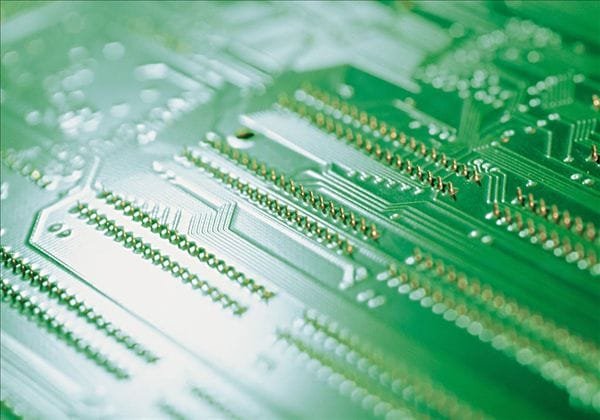
Single and double layer circuit boards are usually used in low-frequency analog designs below 10KHz
1) The power circuit on the same layer are routed radially, and the sum of the lengths of the circuit is minimized;
2) When laying out the power supply and ground circuit, they should be close to each other; lay a ground routing on the side of the critical signal, and this ground routing should be as close to the signal routing as possible. In this way, a smaller loop area is formed, and the sensitivity of differential mode radiation to external interference is reduced.
3) If it is a double-layer circuit board, you can lay a ground routing along with the signal routing on the other side of the circuit board, close to the bottom of the signal routing, and the circuit should be as wide as possible.
Lamination of four-layer PCB boards
- SIG-GND(PWR)-PWR (GND)-SIG,
- GND-SIG(PWR)-SIG(PWR)-GND,
The potential problem for the above two stack-up designs is for the traditional 1.6mm (62mil) board thickness. The layer spacing will become very large, which is not conducive to controlling impedance, interlayer coupling, and shielding; significantly, the large spacing between the power supply layer and the ground layer reduces the board capacitance and is not conducive to filtering noise.
The first solution is usually used when there are many chips on the PCB board. This scheme can get better SI performance, but not very good for EMI performance, mainly controlled by traces and other details.
The second solution is usually used when the chip density on the PCB is low enough, and there is enough space around the chip. In this scheme, the outer layers of the PCB are ground layers, and the two middle layers are signal/power layers. This is the best 4-layer PCB structure available from an EMI control perspective.
Note: The distance between the middle two signal and power mixed layers should be widened. The wiring direction should be vertical to avoid crosstalk; the board area should be adequately controlled to reflect the 20H rule.
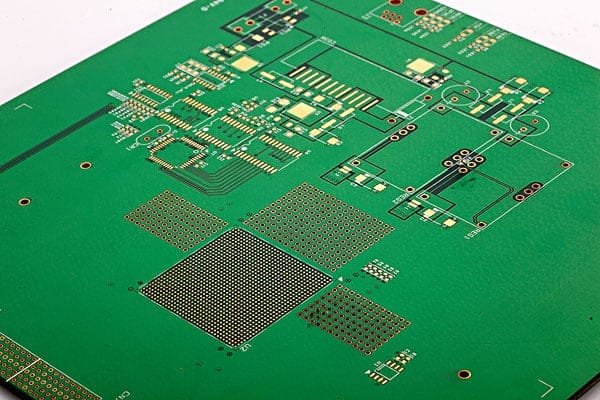
Lamination of six-layer PCB board
For the design with high chip density and high clock frequency, the design of a 6-layer PCB board should be considered. The recommended stacking method is as follows:
- SIG-GND-SIG-PWR-GND-SIG;
This stack-up scheme results in better signal integrity. The signal layer is adjacent to the ground layer, the power layer and the ground layer are paired, the impedance of each trace layer can be well controlled, and both ground layers can absorb magnetic lines of force well.
- GND-SIG-GND-PWR-SIG-GND;
This solution is only suitable for the case where the density of components is not very high. This kind of stack has all the advantages of the above stack, and the ground planes of the top and bottom layers are relatively complete, which can be used as a better shielding layer. Therefore, the EMI performance is better than the first solution.
Summary: Comparing the first scheme with the second scheme, the cost of the second scheme is significantly increased. Therefore, we usually choose the first solution when stacking.
Recommended Posts
5 Key Factors for FPC PCB Impedance Control Success
Impedance control is critical for high-performance FPC PCBs in 5G, IoT, and automotive applications. Learn five key factors—substrate properties, trace design, spacing, etching, and plating—to ensure signal integrity. Partner with JHYPCB for expert FPC solutions. Read more to optimize your designs!
Layer Stackup in Rigid-Flex PCB
A rigid-flex PCB Stackup is a type of PCB that has both rigid and flexible layers. You should choose the best stackup type for your project.
Why Choose FR-4 as Your PCB Material in 2025? JHYPCB’s Ultimate Guide
Why choose FR-4 PCBs in 2025? JHYPCB’s guide reveals benefits, uses, and custom solutions for 5G, IoT, and EVs. Read now!
Fast Prototype PCB Services for US Customers
Looking for fast turnaround on prototype PCBs without the high costs? JHYPCB, a leading PCB manufacturer in China, provides rapid prototyping and production of high-quality PCBs at competitive prices for US customers.
Custom PCB Fabrication in China – Prototyping & Mass Production
At JHYPCB, a leading custom PCB manufacturer in China, we provide reliable solutions for all your prototyping, mass production, and assembly needs. Our state-of-the-art facilities, skilled team, and customer-centric approach ensure high-quality custom circuit boards delivered efficiently. Partner with us for a seamless journey from concept to fully functional product.
Leveraging Turnkey PCB Assembly Manufacturing Services
Leveraging turnkey PCB assembly manufacturers streamlines production through integrated fabrication, component sourcing, assembly, testing, and logistics orchestration. We explore optimal partner selection and launch preparedness.

